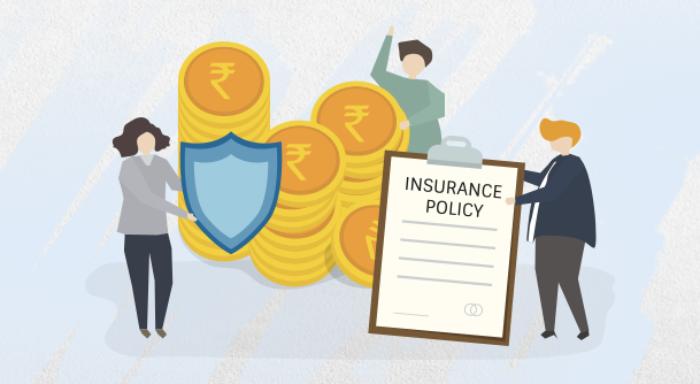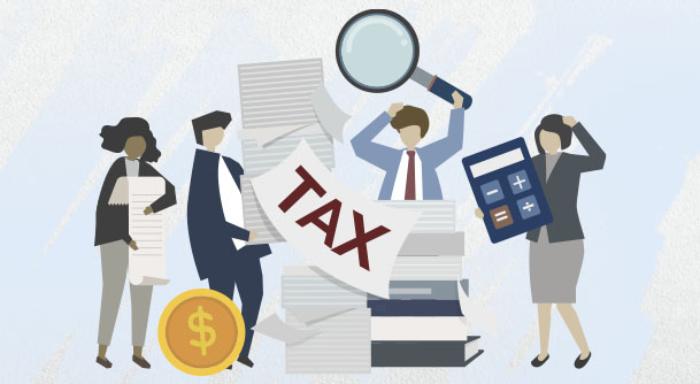Difference Between Life Insurance & General Insurance
Blog Title
405 |
5/7/25 6:27 AM |
You work hard, save money, and plan for a stable financial future for you and your family. But life is unpredictable, and any unexpected event can hinder your plans for the future. Accidents, illnesses, or job loss can threaten your financial stability at any time. That’s why having insurance plans for various eventualities is essential for financial security.
There are two main types of insurance: life insurance and general insurance. Life insurance protects your loved ones if something happens to you. General insurance covers risks like medical emergencies, car accidents, or home damages.
Both serve different purposes, but together, they create a financial safety net. So, how to decide which one you need? Let’s break it down so you can choose the right protection for yourself and your family.
What is Life Insurance?
Life insurance can be defined as a contract between you and an insurance company, where the insurer promises to pay a sum of money to your beneficiaries in case of your untimely demise. In simple words, it is a financial safety cover for your loved ones.
It makes sure that in the unlikely circumstance of your unfortunate demise, your family is financially secure. You can think of it as a long-term financial commitment towards your family.
Life insurance offers several benefits, including income replacement, debt repayment, and funeral expenses coverage. It also offers tax benefits: death benefits are often tax-free, and cash value growth isn’t taxed until you withdraw it.
Types of Life Insurance
Term Life Insurance:
This term plan offers coverage for a specified term (e.g., 10, 20, or 30 years). It provides a death benefit if you pass away during the policy term. You get a pure protection plan with no maturity benefits, offering high coverage at a low cost.
For example, suppose you buy a 20-year term life insurance policy of ₹10 crore. If something happens to you within this period, your family gets ₹10 crore. If you survive, there is no payout.
Whole Life Insurance:
This plan provides coverage for your entire life. When you pass away, your family gets the payout. It includes a cash value component that grows over time. Note that premiums are higher since there is lifelong coverage.
Example: If you buy a whole life policy at 20, pay premiums regularly, and live till 80, your family will still get the money at your demise.
Term Insurance with Return of Premium (TROP):
This plan is similar to term life insurance. But, in this plan, you get back all the premiums you paid if you survive the policy term.
For example, let’s say you buy a 25-year TROP policy with a ₹10,000 yearly premium. If you pass away during the term, your family gets the sum assured. If you survive, you get back ₹2,50,000 (₹10,000 × 25 years).
It offers you protection + savings. However, note that it has higher premiums than regular term insurance.
Unit-Linked Insurance Plans (ULIPs):
ULIP combines life insurance with investment options. Here, your premium goes towards both life cover as well as market-linked funds. Your regular premium payments are invested into various funds that grow over time to facilitate your financial prosperity. Moreover, in case of your death, your loved ones will be financially secured via a death benefit payout.
ULIPs have two life cover variants:
Type 1- Death benefit will either be the sum assured amount (decided at inception of policy) or the fund value; whichever is higher at the time of claim.
Type 2- Death benefit will include both the sum assured as well as the fund value amount.
ULIPs are a great way to passively grow your wealth via market-linked returns while also securing your loved ones in case of your untimely demise. Note that returns in ULIPs are non-guaranteed and your returns will depend on market performance.
Endowment Plan:
In this plan you have two benefits: life cover and savings. At your demise during the policy term, your family gets a payout. If you survive, you get a lump sum amount. Endowment plans are suitable for you if you seek both moderate savings and insurance.
There are two types of endowment plans in India:
Guaranteed Plans- Where the interest rate is completely guaranteed and never varies.
Participating Plans- Where the interest rate will vary depending on the annual performance/profits of the insurance provider.
Money-Back Plans:
These plans offer periodic payouts at intervals instead of waiting till the end of the policy. If you survive the term of your policy, you get the full sum assured, along with bonuses.
What is General Insurance?
General insurance protects you from unexpected losses. Unlike life insurance, it covers assets, health, and liabilities. It safeguards against risks like accidents, theft, natural disasters, and medical emergencies.
Imagine your car is in an accident or your home is damaged in a storm. Without general insurance, you'll have to cover these costs yourself, which can be a financial burden. Additionally, paying health insurance premiums qualifies you for deductions under Section 80D.
Types of General Insurance
Health Insurance:
Health insurance covers your hospitalisation expenses, surgeries, and treatments for illnesses. Your insurance company will pay a major part of the cost. The premium varies based on age, medical history, and coverage.
The claim process can be cashless if you use network hospitals or reimbursement-based if you pay first and claim later. Additionally, you can also get tax benefits, as health insurance premiums qualify for deductions under Section 80D.
Motor Insurance:
Motor insurance protects your vehicle against damages, theft, and third-party liabilities. Policies are typically annual, though long-term options are available. Premiums depend on your vehicle’s type, age, and coverage, while filing a claim generally requires an FIR for theft or accidents along with repair estimates.
Although there are no direct tax benefits, businesses may claim motor insurance premiums as an expense.
Home Insurance:
This insurance protects your house from unexpected damages like floods, theft, fire, or any other natural disasters. If something happens to your home, the insurance company helps cover repair or rebuilding costs. The policy term is usually 1-5 years, with longer terms available as well.
The premium here is based on your property value and coverage type. To claim insurance, you will need proof of damage and repair estimates. Note that there are no direct tax benefits, but it can be a deductible expense for rented properties under certain tax regulations.
Travel Insurance:
It covers medical emergencies, flight cancellations, and other travel-related issues while you’re abroad. Policies range from single trip to annual multi-trip coverage, with premiums based on your destination, trip duration, and selected coverage amount.
To make a claim, you’ll need supporting documents like medical reports or police complaints. No tax benefits are provided with this policy.
Commercial Insurance:
Commercial insurance safeguards your business from risks such as property damage, employee injuries, and lawsuits. It typically provides coverage for property, liability, and business interruption on an annual policy with renewal options. The premiums depend on factors like business size and industry risk.
The claim process involves reporting incidents, submitting documentation, and receiving a settlement based on policy terms. Additionally, premiums are often deductible as business expenses, reducing taxable income.
Key Differences Between Life and General Insurance
Feature |
Life Insurance |
General Insurance |
Purpose |
Provides financial security to your family. |
Covers your financial losses due to unforeseen circumstances like accidents, illness, or theft. |
Coverage |
Life coverage for the policyholder. |
Protects your assets, such as your home, car, and health, and covers travel-related risks. |
Duration |
Long-term (10-40 years or lifelong). |
Short-term (annual or multi-year). |
Premiums |
Fixed for the policy term. |
Varies based on asset risk and type of coverage. |
Claim Process |
Paid to the nominee after your (policyholder’s) demise. |
Paid to you upon claim verification. |
Final Takeaway
By now, you know that both life and general insurance play key roles in securing your financial well-being. Life insurance ensures your family's future, while general insurance protects you against unexpected losses.
Both life and general insurance serve different purposes, but together, they provide well-rounded financial protection. Protect yourself, your loved ones, and your assets today!










